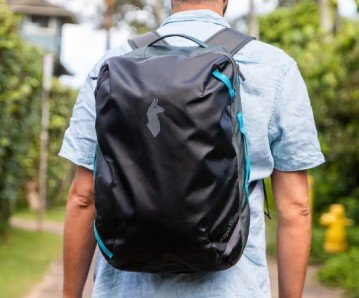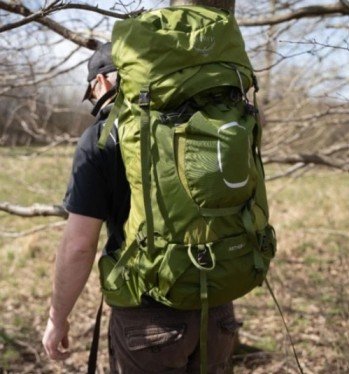
Extreme weather conditions can present a challenge for outdoor enthusiasts and adventurers. Whether you’re trekking through snowy mountains or braving the scorching heat of the desert, having the right backpack fabric is crucial to ensure durability, comfort, and protection. In this article, we will explore the various types of backpack fabrics that are suitable for extreme weather conditions. From waterproof materials to fabrics that offer insulation and breathability, we’ll cover it all.
1. Introduction
When embarking on outdoor adventures in extreme weather conditions, having a backpack made with the appropriate fabric is vital. The fabric used determines the backpack’s performance, durability, and ability to withstand the elements. Let’s explore the types of fabrics that are best suited for such conditions.
2. Importance of Backpack Fabric in Extreme Weather
The fabric of a backpack plays a significant role in determining its ability to withstand extreme weather conditions. It needs to be strong, resistant to tears, and capable of providing protection against rain, snow, heat, or cold. The right fabric ensures that your gear stays dry, your belongings are secure, and you can focus on your adventure without worrying about your equipment failing you.
3. Key Factors to Consider

When selecting backpack fabric for extreme weather conditions, there are several important factors to consider:
Durability
The fabric should be able to withstand the ruggedness of outdoor environments. It should be resistant to abrasions, tears, and punctures. Look for fabrics known for their durability and long-lasting performance.
Waterproofing
Waterproofing is essential to keep your gear dry in wet weather. Look for fabrics treated with durable water repellents (DWR) or those that have waterproof membranes, such as Gore-Tex. These fabrics prevent moisture from seeping into your backpack.
Insulation
If you’re venturing into cold climates, insulation becomes crucial. Some fabrics have built-in insulation properties or can accommodate insulating layers. They help retain body heat and keep you warm in freezing temperatures.
Breathability
In hot and humid conditions, proper ventilation is essential to prevent excessive sweating and discomfort. Fabrics that offer breathability allow air to circulate, keeping you cool and preventing moisture buildup.
4. Types of Backpack Fabrics
Nylon
Nylon is a popular choice for backpacks due to its exceptional durability, abrasion resistance, and lightweight. It provides good water resistance and dries quickly. Nylon fabrics with ripstop weaves offer enhanced strength and prevent tears from spreading.
Polyester
Polyester is another widely used fabric for backpacks. It is highly durable, resistant to UV rays, and offers good water resistance. Polyester fabrics are known for their colorfastness and ability to retain their shape even after prolonged use.

Dyneema Composite Fabrics (DCF)
DCF, formerly known as Cuben Fiber, is a high-performance fabric known for its exceptional strength-to-weight ratio. It is lightweight, tear-resistant, and highly waterproof. DCF backpacks are ideal for extreme weather conditions that require minimal weight without compromising durability.
Cordura
Cordura is a robust and rugged fabric known for its resistance to abrasions, tears, and scuffs. It is commonly used in backpacks designed for outdoor adventures. Cordura fabrics are available in different deniers, offering varying levels of durability.
Gore-Tex
Gore-Tex is a waterproof and breathable fabric often used in backpacks. It features a microporous membrane that allows sweat vapor to escape while preventing water from entering. Gore-Tex backpacks are suitable for wet weather conditions.

X-Pac
X-Pac is a laminated fabric that combines polyester or nylon with waterproof films. It provides excellent durability, water resistance, and abrasion resistance. X-Pac backpacks are favored by hikers, climbers, and adventurers for their ruggedness.
Ripstop Nylon
Ripstop nylon is a lightweight fabric known for its exceptional tear resistance. It is often used in backpacks that require high strength and durability while maintaining a light overall weight.
Neoprene
Neoprene is a synthetic rubber fabric known for its excellent insulation properties. It provides insulation against both cold and heat and is often used in backpacks designed for extreme weather conditions.
PVC Coated Fabrics
PVC (Polyvinyl Chloride) coated fabrics offer excellent water resistance and durability. They are commonly used in backpacks that require a high level of waterproofing, such as those used for water sports or in rainy climates.
Polyurethane (PU) Coated Fabrics
Polyurethane-coated fabrics provide good water resistance and breathability. They are lightweight, flexible, and commonly used in backpacks that require a balance between water resistance and breathability.
5. Choosing the Right Fabric for Specific Weather Conditions

Cold Weather
For cold weather conditions, focus on backpacks with insulation properties. Fabrics like neoprene and those with built-in insulating layers can help retain body heat and protect your gear from freezing temperatures.
Hot Weather
In hot weather, prioritize backpacks with excellent breathability. Look for fabrics that allow air circulation, such as those with mesh panels or moisture-wicking properties. This helps prevent excessive sweating and keeps you cool.
Wet Weather
When expecting rain or wet conditions, opt for backpacks made with waterproof fabrics like Gore-Tex or those treated with durable water repellents (DWR). These fabrics prevent water from seeping into your backpack and protect your belongings.
Windy Conditions
In windy conditions, focus on backpacks made with wind-resistant fabrics like ripstop nylon or those with wind-blocking features. These fabrics help shield your gear from the chilling effects of strong winds.
6. Care and Maintenance of Backpack Fabrics
To ensure the longevity and performance of your backpack fabric, proper care and maintenance are essential. Follow the manufacturer’s instructions regarding cleaning and storage. Regularly inspect your backpack for any signs of wear and tear, and promptly address any repairs or replacements needed.
7. Conclusion
Choosing the right backpack fabric is crucial for outdoor enthusiasts facing extreme weather conditions. From durability to waterproofing, insulation to breathability, the fabric plays a significant role in ensuring your gear’s performance and protection. Consider the specific weather conditions you’ll encounter, and select a fabric that suits your needs. With the right backpack fabric, you can embark on your adventures with confidence, knowing that your gear is up to the challenge.
FAQs
- Q: Which fabric is best for extreme cold weather conditions? A: Fabrics like neoprene and those with built-in insulation are ideal for extreme cold weather conditions.
- Q: Can polyester fabrics withstand heavy rain? A: Yes, polyester fabrics offer good water resistance and can withstand heavy rain.
- Q: Are PVC-coated fabrics suitable for backpacks used in water sports? A: Yes, PVC-coated fabrics provide excellent waterproofing and are commonly used in backpacks for water sports.
- Q: Do all backpack fabrics offer breathability? A: No, not all fabrics offer breathability. Look for fabrics specifically designed with breathability features.
- Q: How should I clean and store my backpack made with specialized fabrics? A: Follow the manufacturer’s instructions for cleaning and storage to ensure the longevity of your backpack.


